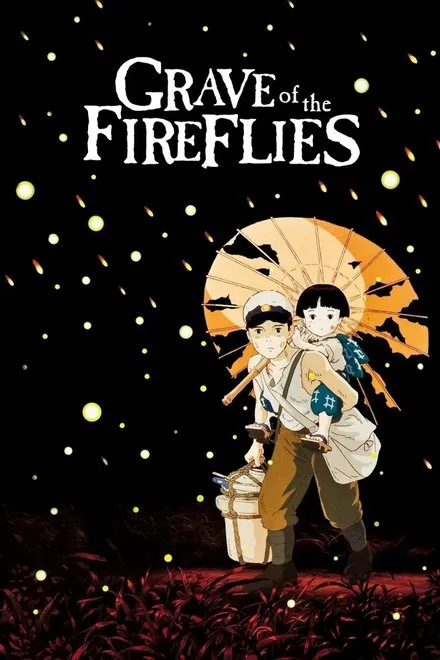
Directed by: Isao Takahata
Starring: Tsutomu Tatsumi, Ayano Shiraishi, Yoshiko Shinohara, Akemi Yamaguchi
🧠 Introduction: Childhood Amidst Catastrophe
Grave of the Fireflies (1988) is Studio Ghibli’s heart-shattering masterpiece—a story of two siblings, Seita and Setsuko, struggling to survive in wartime Japan. Based on the semi-autobiographical novel by Akiyuki Nosaka, the film is both a condemnation of war’s horrors and a tribute to the resilience of love. Its ending is widely regarded as one of the most devastating in cinema. Why must Seita and Setsuko die? What is the film ultimately saying about survival, memory, and innocence?
🔥 Descent into Despair: The Collapse of Family
The siblings’ journey is one of escalating tragedy. After their mother’s death and their father’s absence at war, Seita and Setsuko are forced to rely on the kindness of relatives and, later, fend for themselves in an abandoned bomb shelter. Their struggle is rendered with painful realism—hunger, illness, and alienation erode their hope. The titular fireflies, glowing briefly and then dying, become a recurring symbol of beauty’s fragility and life’s impermanence.
🍃 The Fireflies’ Lesson: Fleeting Joy, Enduring Loss
Setsuko’s illness and eventual death is a shattering blow, rendered with a quiet, unbearable tenderness. Seita’s efforts to save his sister are too late, and his own death follows soon after. The siblings are reunited only in spirit, overlooking the city they once knew. The story is circular, beginning and ending with their ghosts, never truly at rest.
🎯 Ending Explained: The Cost of War, the Power of Memory
Grave of the Fireflies ends not with hope, but with a demand to remember. The children’s suffering is not unique, but emblematic of all war’s victims—those rendered invisible by history, their dreams extinguished before they could blossom. Yet in the beauty of the fireflies, the moments of laughter, and the enduring love between Seita and Setsuko, the film finds dignity and meaning. The final images—spirits at peace amid the ruins—are a plea for compassion, empathy, and the promise to do better.